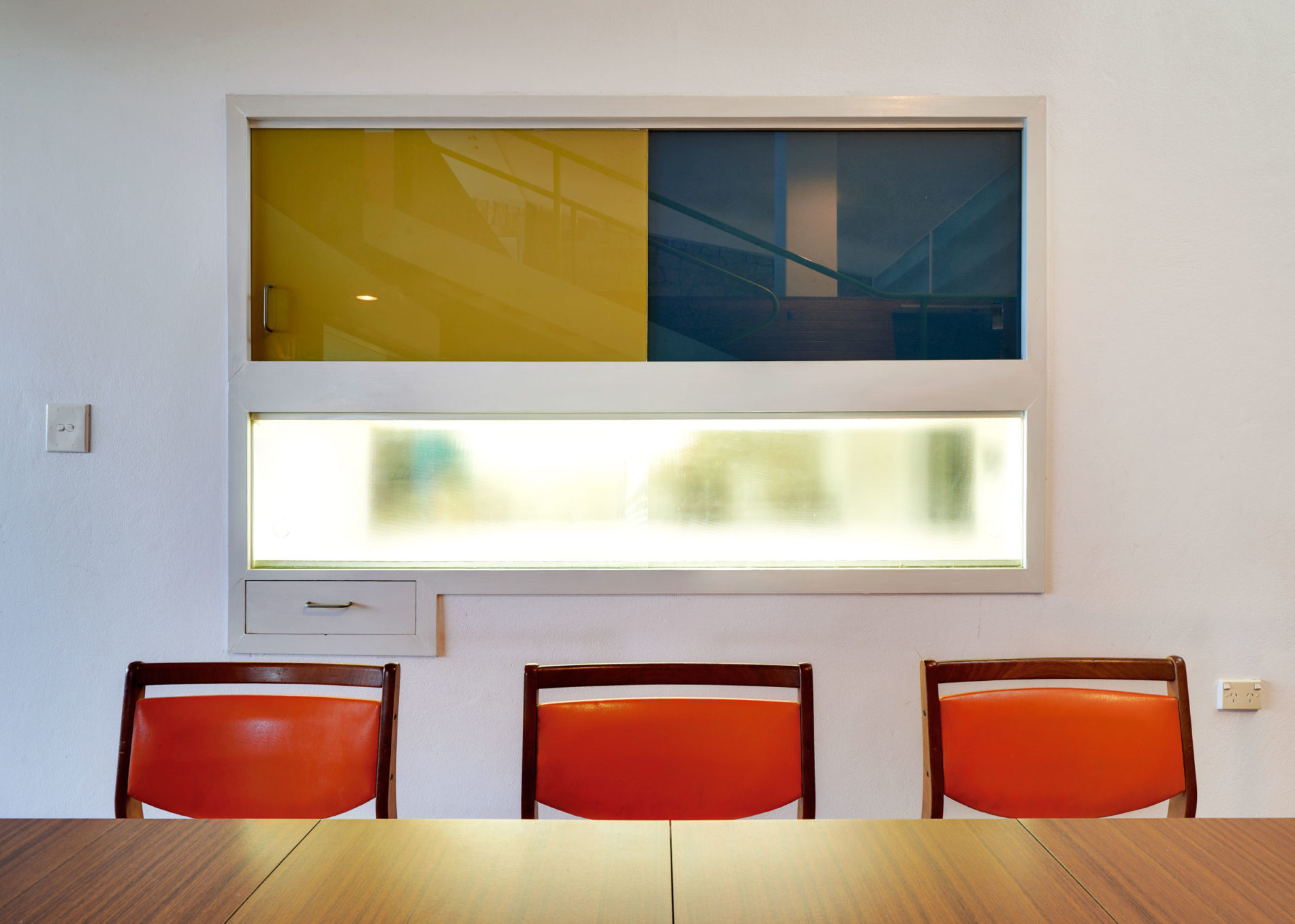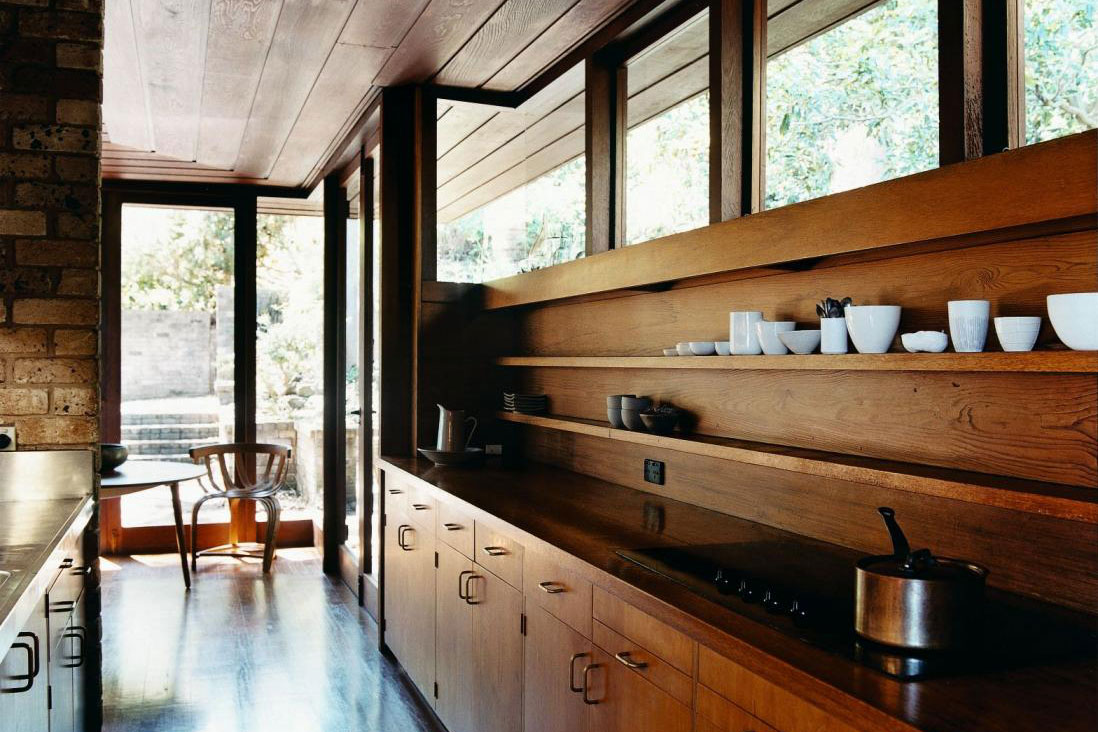Secrets of Modern House Design

Several years ago, when an Adelaide couple moved into their slightly crazy, very modern house, designed by Jacoby & Jacoby in the Fifties for an engineer, they loved the sculpted terrazzo windowsills inside and out, the custom designed flyscreen front door, and even the dropped ceiling in the living area fitted with multi-coloured globes.
The kitchen had what may have been one of the first water filters ever fitted in a domestic situation in this country – still in perfect working order, and an indication of the interest the original owner had in technology. What the new owners couldn’t work out was the switch above the bed in the main bedroom – it didn’t seem to do a thing. It took them months to realise it turned on the heater in the bathroom on the other side of the corridor – a stroke of pure genius and a testament to the ingenuity of modern house design.
Slightly more obvious, but no less pleasing, is a tiny door beside the stove in Harry Seidler’s Thurlow House, designed in 1952. Open it up and, in the same way the fridge light goes on when you open the door, this activates an exhaust fan.
Modern house design: practically ingenious
In terms of modern house design, the Fifties was a time when technology was available, but it took the very best architects and designers to use it in a way that was both practical and subtle.
Looking at the long-distance heater switch and the hidden exhaust fan 60 years later, it’s difficult not to get a bit of a thrill from both. You can’t help thinking about the thought processes involved in these particular examples of problem solving – the agony of getting out of bed in winter, the unsightliness of a necessary gadget.
In the same vein, but without the technology, there are the built-in chopping boards and pot stands that slide out from under the bench tops in Bruce Rickard’s Marshall House. And in the Bullock House on Sydney’s North Shore, there are several features that are both playful and smart, simple and brilliant. They epitomise modern house design; the first is the bathroom cabinet that, open at the back, has direct access to the linen cupboard in the hall, meaning clean towels are always at hand. The second, and a cross between James Bond and the secret passageways of mediaeval castles, is the bookcase in the hall. Look carefully, and there are hinges down one side of the bookcase. With a little bit of careful manoeuvring, the bookcase swings open to reveal a fully fitted-out bar. A party trick that would never fail to impress.

A remote perspective
In this increasingly technological world, our whole lives, including our houses, can be controlled via our phones. Close the blinds, turn the lights on, put the dinner on, turn the burglar alarm off – we can do virtually everything by punching a few buttons these days. Remotely.
‘Remotely’ describes the process well – it’s not just that you can be miles away when you do it, but you never have to actively engage with your house while you do so – it takes the same effort, and involves the same action, to both close the curtains and switch on the oven, which doesn’t seem quite right when you think about it. There’s something almost ‘big brother’, in the George Orwell sense, about it.
The best of modern house design is all about really living in a house – discovering it, marvelling in it, being involved with it and making it work. Give us the bedroom switch, the hidden exhaust fan or the kooky bar any day.
Photography from top:
Thurlow House by Harry Seidler Architect. Photo: © Michael Nicholson
Marshall House by Bruce Rickard. Photo: © Michael Wee

